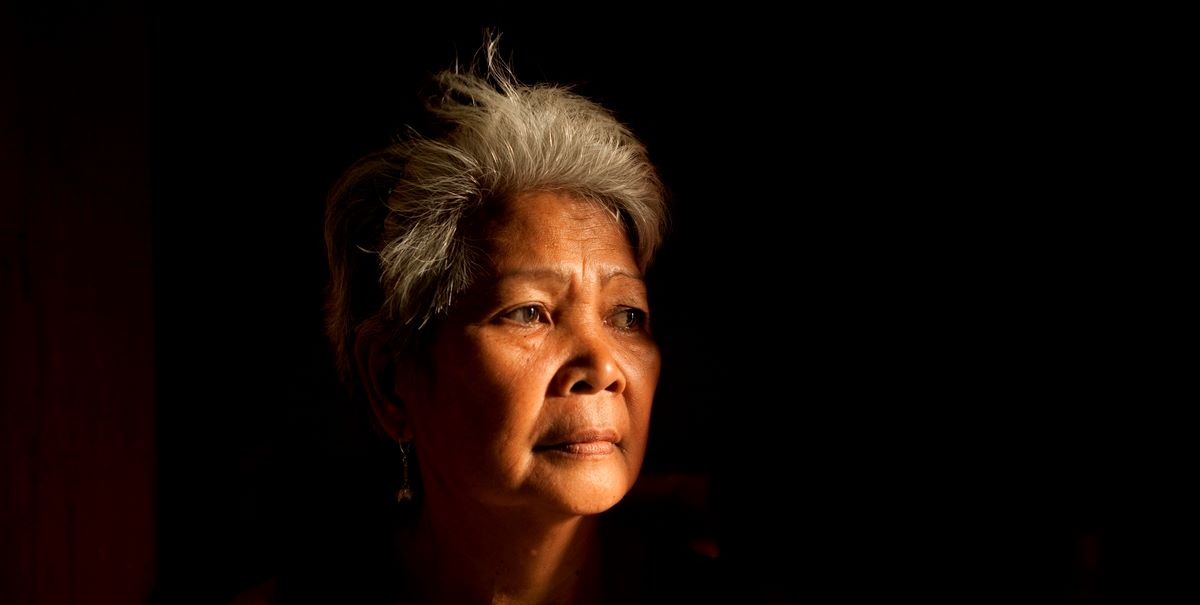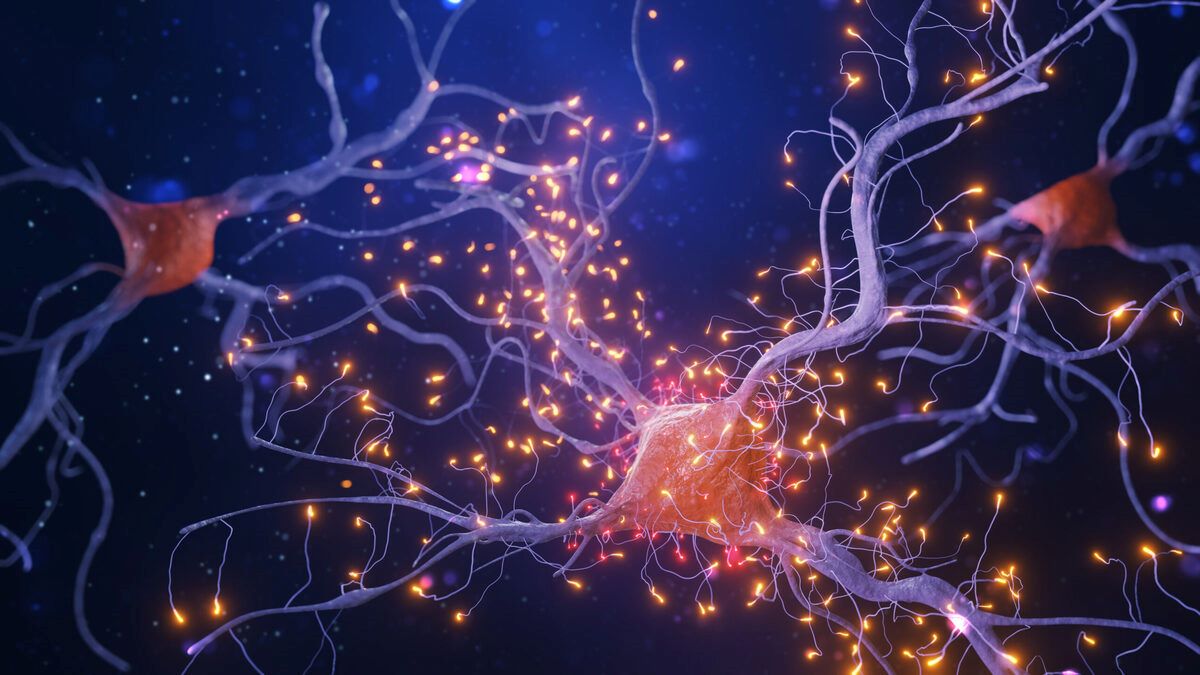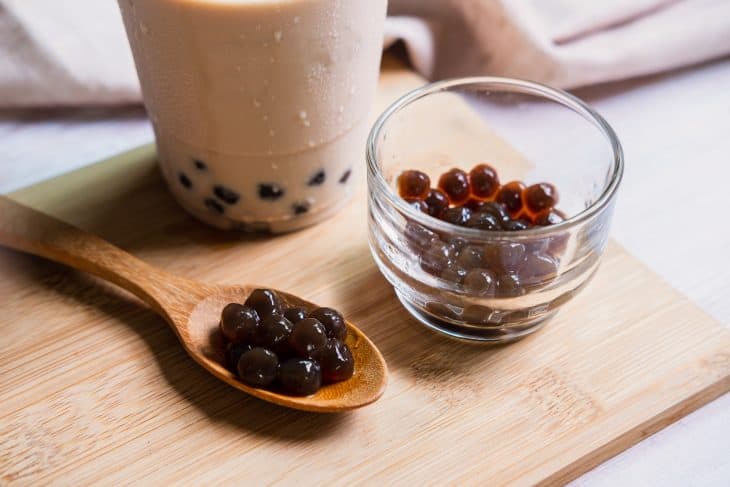
In a world where food fads come and go, bubble tea has reigned supreme as a well-loved drink. For over 30 years, people have gotten into the milk tea craze, adding various twists to the drink as time goes by. Originating from Taiwan around the mid-’80s, this Asian drink has since captured people’s taste buds around the globe. However, what exactly is in this drink that makes people go crazy over it? Find out the secrets of bubble tea with these refreshing facts about boba.
- The first bubble tea came out in the early 1980s.
- Each tapioca ball has 5 to 14 calories.
- Locally called “pào pào chá,” Singapore has sold bubble tea since 1992.
- For a short time in 2012, all 800 branches of McDonalds in Germany sold bubble tea.
- Cassava root, where the pearls come from, have been used as a food source since the 1400s.
- Bubble tea combines milk, tea, and bubble pearls in a single beverage.
- The bubble tea’s other names are pearl milk tea, bubble milk tea, and boba.
- Bubble tea originated from Taichung, Taiwan.
- The bubble tea is widely famous for its chewy tapioca balls.
- The bubble tea’s tapioca balls traditionally come from cassava root.
- Bubble tea also has many other toppings or sinkers such as Oreo, beans, and grass jelly.
- You can make bubble tea by mixing and matching a variety of over 100 ingredients.
- Other variations of bubble tea may include fruit flavorings.
- The mixture of hot Taiwanese black tea, condensed milk, small tapioca pearls, and honey is one of the oldest versions of bubble tea.
- Although some personalities in Taiwan claim to be the inventor of the bubble tea, nobody knows for sure who invented it.
- The bubble tea’s tapioca is a cheaper alternative to sago pearls.
- The ice-blended versions of the bubble tea are prepared from a blender resulting in a slushy texture.
- The adaptation of bigger tapioca pearls quickly penetrated the market to replace the original small pearls.
- Upon the tapioca’s upsizing, different flavors became popular, particularly the fruit flavors.
- Interestingly, there are numerous stores now that specialize in bubble tea alone and making good profits.
The earliest record of tea as a beverage dates to the 3rd century AD.
Though you may associate tea with the British, the oldest record of tea consumed as a beverage traces back to Southwest China, Tibet, Northeast India, and Northern Myanmar. Back in 200 AD, ethnic groups from these regions drank tea for its medicinal purposes.

There are 2 opposing stories for the origin of bubble tea.
The first legend points bubble tea’s origins to a tea house in Tainan, Taiwan in 1986. According to this story, teahouse owner Tu Tsong-he saw white tapioca balls in the Ya Mu Liao market, which he added those to their products. Essentially, he created what is now known as “pearl tea.”
The second story of the origin of bubble tea credits Taichung, Taiwan for its invention.
Two years later than the first legend, this story claims that the Chun Shui Tang tearoom in Taichung, Taiwan invented the beverage. Inspired from Japanese cold coffee, the tearoom introduced cold tea into its menu. From there, one of the store managers randomly added tapioca balls to the drink, which quickly became a hit with customers.
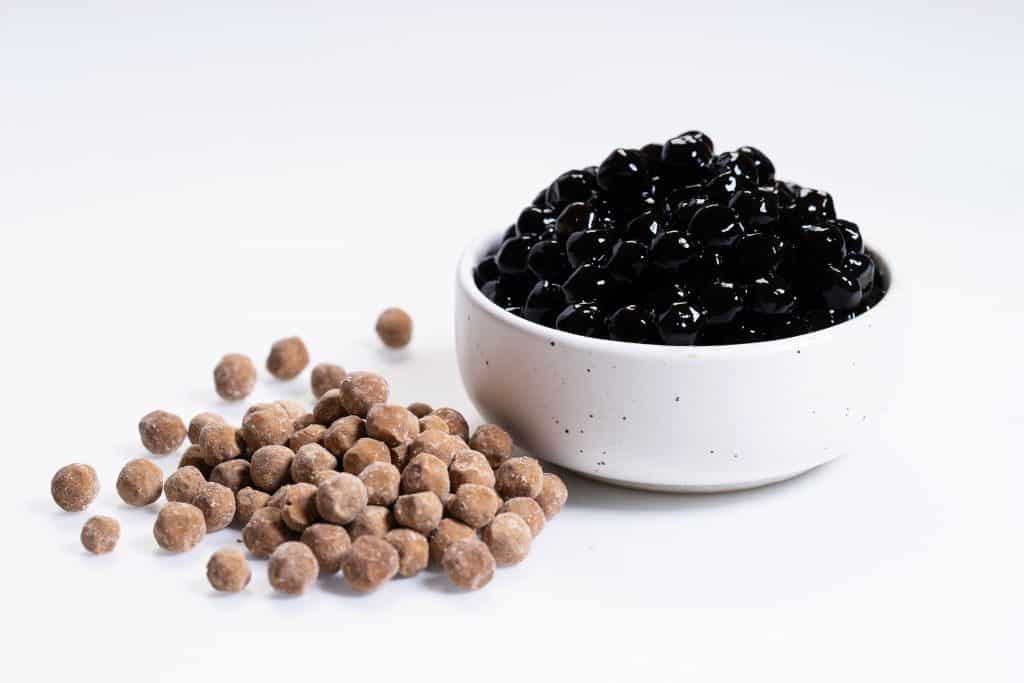
It only took a few years for the bubble tea market to have its breakthrough.
As early as the early 90s, the popularity of bubble tea exploded in most parts of Southeast and East Asia. In Malaysia, for instance, various successful bubble tea brands emerged after only a few years of its introduction.
Tawainese immigrants introduced bubble tea to California.
Beyond Asia, it did not take long for bubble tea to become big in Western countries. Historically, bubble tea first made it to the U.S. when Taiwanese immigrants migrated to California and opened a handful of bubble tea shops around Los Angeles.
Californians live the "boba life."
To most Californians, it’s not uncommon for the bubble tea to be called “boba.” Often, people who can’t get enough of bubble tea are often associated with the Asian American subculture called “boba life.
Bubble tea became popular in Singapore in 2001.
In Singapore, bubble tea did not have perfect traction in the market until 2001. After its boom, local shops would sell around 1,000 cups a day.
Big brands from Taiwan became a challenge for local bubble tea shop owners in Singapore.
Although local bubble tea shops in Singapore have enjoyed an abundance of profits Taiwanese chains like Gong Cha and Koi soon dominated the Singaporean market by 2003.
Commercial companies serve their bubble tea with sealed plastic cellophane.
It’s common for most bubble tea shops to use plastic lids on their cups to cover the product. The key difference between small shops and big commercial shops is that the bigger companies serve their bubble tea using a machine to seal the top of the cup with plastic cellophane. This allows servers to shake the cup upside down before serving, as well as making it spill-free until one is ready to drink.
Bubble tea could have negative effects on your digestion.
In 2019, a 14-year-old girl was sent to the Zhuji People’s Hospital emergency room after five days of abdominal pain and constipation. Upon being administered a laxative, the doctors recovered a large mass of bubble tea pearls that had been clogging her digestive tract. That said, you should definitely take the time to chew on your pearls and only drink in moderation.
Bubble tea is now a signature flavor itself.
Aside from the different Bubble tea flavors, the beverage itself has inspired an actual flavor line for various other desserts such as cakes and ice cream.
Most of the biggest companies of bubble tea come from Taiwan.
Of all the Asian countries that produce bubble tea, it’s no surprise that most of the biggest companies hail from Taiwan – the pioneer of the drink itself. Some of the bubble tea companies leading the global market today are Chatime, CoCo Fresh Tea & Juice, Tiger Sugar, and Quickly.
Quickly is one of the world's biggest tapioca milk tea franchises.
Founded by Nancy Yang and headquartered in Taiwan, Quickly is one of the biggest tapioca milk tea franchises on the planet. Yang first got the idea for the business from her mother’s love for iced desserts. Currently, Quickly has over 2,000 stores located all over North America, Africa, Europe, and Asia.
Part of Quickly's success comes from their product innovation.
In mid-2008, the company introduced its new-age non-fat tart frozen yogurt at the SingTao Asian Expo. Instantly, the new product penetrated the market and became available at their key locations the following week. To this day, this beverage remains a hit for Quickly’s loyal customers.
Numerous bubble tea products were detected to have DEHP in 2011.
In May 2011, bubble tea shops faced controversy in Taiwan when numerous drinks were detected to have DEHP, a plasticizer clouding agent that enhances the appearance of the drinks. Since the consumption of DEHP causes several health issues including heart problems and male genital development, it’s no wonder why people got scared.
The DEHP scandal affected the bubble tea business.
DEHP is a plastic polymer used in different products, so you wouldn’t want anything like that in your drink. The DEHP scandal affected small bubble tea shops as well as big companies such as Gong Cha, even if their products were cleared to have no DEHP content. When the news spread in 2011, Gong Cha’s sales approximately plummeted by 30%. Fortunately, the bubble tea business as a whole would later recover the confidence of the consumers by assuring them that there was no DEHP in their beverages.
The bubble tea business is will not go "bubble" according to estimates.
In the 90s, trend analysts believed that bubble tea was just another viral product that would soon fade away. However, the demand for bubble tea continues to rise to this day. Currently, the bubble tea business is valued at more than $2.5 billion, and is expected to climb up to $4.5 billion by the year 2027.
More and more countries are now adopting bubble tea into their food culture.
Although Taiwan popularized bubble tea, it’s very evident today that more and more countries have adopted bubble tea into their own culture. For instance, several shops around the world have added in local flavors such as saffron, rosewater, hibiscus flowers, and coconut among many others.
The average serving of bubble tea has about 235 calories.
Unfortunately, bubble tea may not be as good for your health as it is for your taste buds. With 54 grams of carbohydrates and about 50 grams of sugar content, you have to keep an eye on your bubble tea intake if you want to live long.
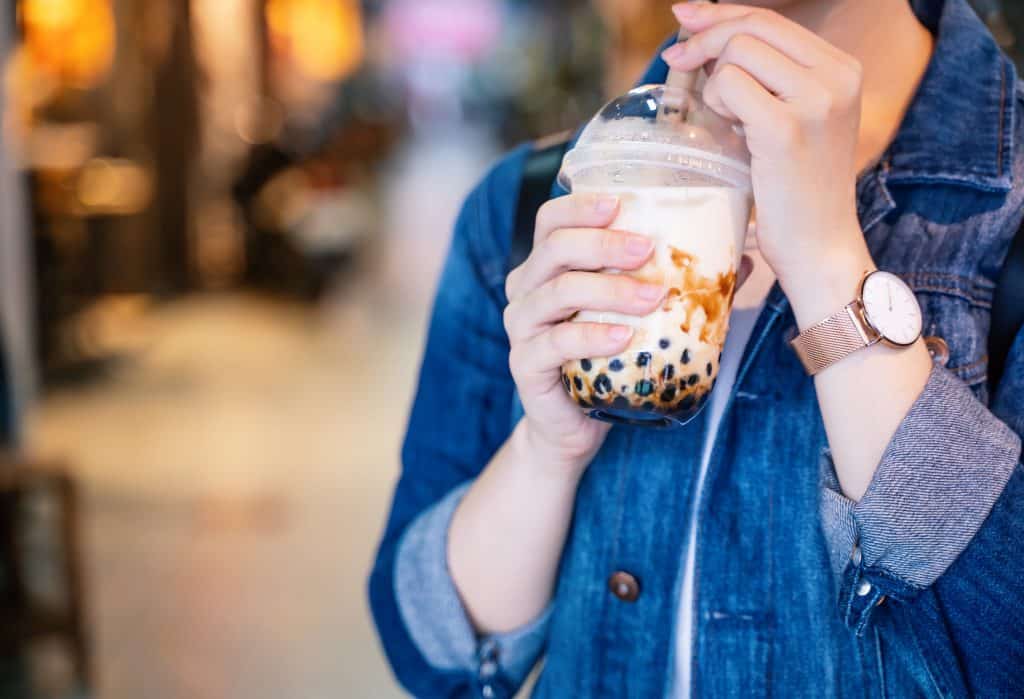
Most bubble tea shops offer sugar levels.
The general rule of thumb for bubble tea is that the more sugar it has, the more calories you’ll get. Most shops today offer sugar level options from 0 to 100%. Depending on your sugar level and other sinkers, you could still have a healthy bubble tea drink.
Poor preparation of the cassava root may cause some health problems.
Poor preparation of the cassava root or tapioca may cause some health problems when consumed. These health problems can range from mild to life-threatening. For example, improper cooking, soaking, or fermenting of the cassava root may result in cyanide poisoning, neurological effects, and goiters.

You can tell how good a bubble tea shop from its tapioca pearls.
An excellent bubble tea shop can consistently produce soft yet chewy tapioca pearls, allowing you to chew for a while before it dissolves into your month. Meanwhile, low-quality bubble tea usually has hard tapiocas that break apart after a single bite or two.
The brown sugar milk tea doesn't have tea.
Despite the name, this variant of bubble tea doesn’t have tea. It has only three ingredients: brown sugar syrup, fresh milk, and tapioca pearls. The flavor and aroma of this beverage came from the slow cooking of pearls in sugar syrup. This process makes the pearls absorb the smoky and caramelly flavor of the sugar.
The original bubble tea flavor is still one of the most popular flavors.
The original bubble tea flavor is classic milk tea, which is still one of the most popular flavors today. Often, classic milk tea uses black tea as a base, combined with milk powder and sugar.
You can prepare boba pearls or tapioca pearls in your own home.
To cook your own boba pearls, you would only need to water into tapioca starch and mix well to become a smooth dough. Afterward, you can cut the dough into small pieces to form balls and boil it for about 15 minutes to attain your desired consistency.

It's always best to consume your bubble tea as soon as possible.
Sometimes, people would order bubble tea, store it in the refrigerator, and drink it the next day. Although there’s nothing wrong with that, it’s still always best to consume your bubble tea as soon as possible because nothing beats freshly shaken bubble tea. Since it contains milk, your drink could also spoil before you get to enjoy it.
Was this page helpful?
Our commitment to delivering trustworthy and engaging content is at the heart of what we do. Each fact on our site is contributed by real users like you, bringing a wealth of diverse insights and information. To ensure the highest standards of accuracy and reliability, our dedicated editors meticulously review each submission. This process guarantees that the facts we share are not only fascinating but also credible. Trust in our commitment to quality and authenticity as you explore and learn with us.

